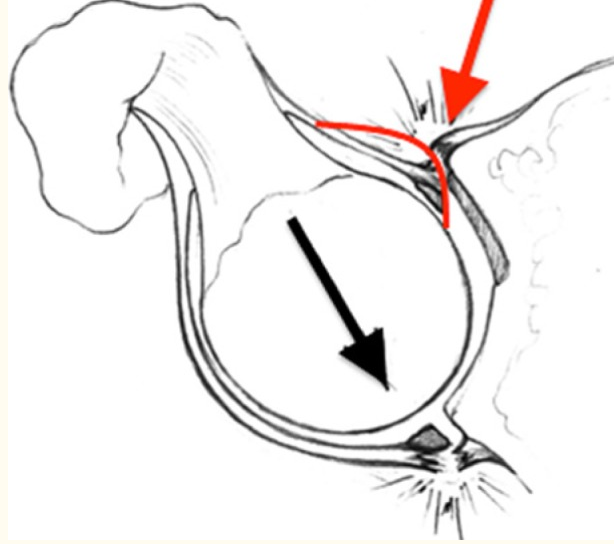SI Joint Pain and Hip Impingement (FAI)
Hip impingement, or femoroacetabular impingement, is pain in the front of the hip that occurs with hip flexion and internal rotation. Sometimes, patients with FAI also get pain in the back side. The sacroiliac joint (SI) is usually the culprit. To read more about the SI joint, check out this blog post.
Why does this so frequently happen? A principle of the body is that where there is an area of stiffness, the neighboring area tends to ‘pick up the slack’. In other words more strain is induced in the SI joint (Hammoud et. al, 2014). It’s similar to the shoulder. If you are missing internal rotation, and you try to reach behind your back, your whole shoulder girdle will tip forward. The same thing happens with the hip. Hip internal rotation is usually very painful and limited in FAI. So as the femur starts to rotate into internal rotation, the pelvis shifts away from the pain and creates torsion at the SI joint. This joint is embedded with a ton of ligaments and they are not contractile like a muscle, so they get inflamed from being stretched. If it gets bad enough, the inflammation ‘leaks’ onto the surrounding nerves and can send pain down the leg.
In a similar mechanism, stress can occur at pubic symphysis, the area in the front where the bones meet. Groin pain is strongly associated with FAI, and this may be the underlying mechanism. This is not to be confused with osteitis pubis, which is pain where the adductor inserts into the pubic tubercle. With osteitis pubis, pain will be elicited with flexion, abduction, and external rotation; the FABER position (Gomella & Mufarrij, 2017).
Another point of confusion is that posterior pain can also be from the hip capsule. When there is a cam deformity present, as the hip is flexed and internally rotated, the head of the femur is levered into the socket, placing stress at the back side of the capsule (Hammoud et. al, 2014). See below:
Photo taken from Hammoud et. al, 2014. The red arrow is the front and the black arrow is the back.
Seeing that lack of range of motion seems to be at the heart of the problem, restoring flexion and internal rotation will reduce strain at the SI joint. For some patients, placing a lateral distraction force helps them get into a better position. However, every person is different so this should only be done if it is pain free. Here is an example:
Think this might be you? Let’s get on a free phone call and figure it out.
References:
Gomella, P., & Mufarrij, P. (2017). Osteitis pubis: A rare cause of suprapubic Pain. Retrieved February 25, 2021, from https://www.ncbi.nlm.nih.gov/pubmed/29302238
Hammoud, S., Bedi, A., Voos, J. E., Mauro, C. S., & Kelly, B. T. (2014). The recognition and evaluation of patterns of compensatory injury in patients with Mechanical HIP PAIN. Sports Health: A Multidisciplinary Approach, 6(2), 108-118. doi:10.1177/1941738114522201


